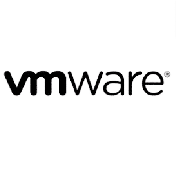Seminarinhalt
Dieses Seminar zeigt Ihnen, wie Sie die Cisco Email Security Appliance einsetzen und verwenden, um Ihre E-Mail-Systeme vor Phishing, E-Mail-Kompromittierung im Unternehmen und Ransomware zu schützen und die Verwaltung von E-Mail-Sicherheitsrichtlinien zu optimieren. Dieser praxisorientierte Kurs vermittelt Ihnen die Kenntnisse und Fähigkeiten zur Implementierung, Fehlerbehebung und Verwaltung der Cisco Email Security Appliance, einschließlich wichtiger Funktionen wie erweiterter Malware-Schutz, Spam-Blockierung, Virenschutz, Filterung von Ausbrüchen, Verschlüsselung, Quarantänen und Verhinderung von Datenverlusten.
Nach Abschluss des Seminars haben die Teilnehmer*innen Kenntnisse zu folgenden Themen:
Nach Abschluss des Seminars haben die Teilnehmer*innen Kenntnisse zu folgenden Themen:
- Verwalten der Cisco Email Security Appliance (ESA)
- Absender- und Empfängerdomänen kontrollieren
- Spam-Kontrolle mit Talos SenderBase und Anti-Spam
- Antiviren- und Ausbruchsfilter verwenden
- Mail-Richtlinien verwenden
- Inhaltsfilter verwenden
- Verwendung von Nachrichtenfiltern zur Durchsetzung von E-Mail-Richtlinien
- Datenverlust verhindern
- Ausführen von LDAP-Abfragen
- Authentifizierung von SMTP-Sitzungen (Simple Mail Transfer Protocol)
- E-Mail authentifizieren
- E-Mail verschlüsseln
- Verwendung von Systemquarantänen und Bereitstellungsmethoden
- Zentralisierte Verwaltung mit Clustern durchführen
- Test und Fehlerbehebung
Programm
Describing the Cisco Email Security Appliance
Administering the Cisco Email Security Appliance
Controlling Sender and Recipient Domains
Controlling Spam with Talos SenderBase and Anti-Spam
Using Anti-Virus and Outbreak Filters
Using Mail Policies
Using Content Filters
Using Message Filters to Enforce Email Policies
Preventing Data Loss
Using LDAP
SMTP Session Authentication
Email Authentication
Email Encryption
Using System Quarantines and Delivery Methods
Centralized Management Using Clusters
Testing and Troubleshooting
References
Lab outline
- Cisco Email Security Appliance Overview
- Technology Use Case
- Cisco Email Security Appliance Data Sheet
- SMTP Overview
- Email Pipeline Overview
- Installation Scenarios
- Initial Cisco Email Security Appliance Configuration
- Centralizing Services on a Cisco Content Security Management Appliance (SMA)
- Release Notes for AsyncOS 11.x
Administering the Cisco Email Security Appliance
- Distributing Administrative Tasks
- System Administration
- Managing and Monitoring Using the Command Line Interface (CLI)
- Other Tasks in the GUI
- Advanced Network Configuration
- Using Email Security Monitor
- Tracking Messages
- Logging
Controlling Sender and Recipient Domains
- Public and Private Listeners
- Configuring the Gateway to Receive Email
- Host Access Table Overview
- Recipient Access Table Overview
- Configuring Routing and Delivery Features
Controlling Spam with Talos SenderBase and Anti-Spam
- SenderBase Overview
- Anti-Spam
- Managing Graymail
- Protecting Against Malicious or Undesirable URLs
- File Reputation Filtering and File Analysis
- Bounce Verification
Using Anti-Virus and Outbreak Filters
- Anti-Virus Scanning Overview
- Sophos Anti-Virus Filtering
- McAfee Anti-Virus Filtering
- Configuring the Appliance to Scan for Viruses
- Outbreak Filters
- How the Outbreak Filters Feature Works
- Managing Outbreak Filters
Using Mail Policies
- Email Security Manager Overview
- Mail Policies Overview
- Handling Incoming and Outgoing Messages Differently
- Matching Users to a Mail Policy
- Message Splintering
- Configuring Mail Policies
Using Content Filters
- Content Filters Overview
- Content Filter Conditions
- Content Filter Actions
- Filter Messages Based on Content
- Text Resources Overview
- Using and Testing the Content Dictionaries Filter Rules
- Understanding Text Resources
- Text Resource Management
- Using Text Resources
Using Message Filters to Enforce Email Policies
- Message Filters Overview
- Components of a Message Filter
- Message Filter Processing
- Message Filter Rules
- Message Filter Actions
- Attachment Scanning
- Examples of Attachment Scanning Message Filters
- Using the CLI to Manage Message Filters
- Message Filter Examples
- Configuring Scan Behavior
Preventing Data Loss
- Overview of the Data Loss Prevention (DLP) Scanning Process
- Setting Up Data Loss Prevention
- Policies for Data Loss Prevention
- Message Actions
- Updating the DLP Engine and Content Matching Classifiers
Using LDAP
- Overview of LDAP
- Working with LDAP
- Using LDAP Queries
- Authenticating End-Users of the Spam Quarantine
- Configuring External LDAP Authentication for Users
- Testing Servers and Queries
- Using LDAP for Directory Harvest Attack Prevention
- Spam Quarantine Alias Consolidation Queries
- Validating Recipients Using an SMTP Server
SMTP Session Authentication
- Configuring AsyncOS for SMTP Authentication
- Authenticating SMTP Sessions Using Client Certificates
- Checking the Validity of a Client Certificate
- Authenticating User Using LDAP Directory
- Authenticating SMTP Connection Over Transport Layer Security (TLS) Using a Client Certificate
- Establishing a TLS Connection from the Appliance
- Updating a List of Revoked Certificates
Email Authentication
- Email Authentication Overview
- Configuring DomainKeys and DomainKeys Identified Mail (DKIM) Signing
- Verifying Incoming Messages Using DKIM
- Overview of Sender Policy Framework (SPF) and SIDF Verification
- Domain-based Message Authentication Reporting and Conformance (DMARC) Verification
- Forged Email Detection
Email Encryption
- Overview of Cisco Email Encryption
- Encrypting Messages
- Determining Which Messages to Encrypt
- Inserting Encryption Headers into Messages
- Encrypting Communication with Other Message Transfer Agents (MTAs)
- Working with Certificates
- Managing Lists of Certificate Authorities
- Enabling TLS on a Listener’s Host Access Table (HAT)
- Enabling TLS and Certificate Verification on Delivery
- Secure/Multipurpose Internet Mail Extensions (S/MIME) Security Services
Using System Quarantines and Delivery Methods
- Describing Quarantines
- Spam Quarantine
- Setting Up the Centralized Spam Quarantine
- Using Safelists and Blocklists to Control Email Delivery Based on Sender
- Configuring Spam Management Features for End Users
- Managing Messages in the Spam Quarantine
- Policy, Virus, and Outbreak Quarantines
- Managing Policy, Virus, and Outbreak Quarantines
- Working with Messages in Policy, Virus, or Outbreak Quarantines
- Delivery Methods
Centralized Management Using Clusters
- Overview of Centralized Management Using Clusters
- Cluster Organization
- Creating and Joining a Cluster
- Managing Clusters
- Cluster Communication
- Loading a Configuration in Clustered Appliances
- Best Practices
Testing and Troubleshooting
- Debugging Mail Flow Using Test Messages: Trace
- Using the Listener to Test the Appliance
- Troubleshooting the Network
- Troubleshooting the Listener
- Troubleshooting Email Delivery
- Troubleshooting Performance
- Web Interface Appearance and Rendering Issues
- Responding to Alerts
- Troubleshooting Hardware Issues
- Working with Technical Support
References
- Model Specifications for Large Enterprises
- Model Specifications for Midsize Enterprises and Small-to-Midsize Enterprises or Branch Offices
- Cisco Email Security Appliance Model Specifications for Virtual Appliances
- Packages and Licenses
Lab outline
- Verify and Test Cisco ESA Configuration
- Perform Basic Administration
- Advanced Malware in Attachments (Macro Detection)
- Protect Against Malicious or Undesirable URLs Beneath Shortened URLs
- Protect Against Malicious or Undesirable URLs Inside Attachments
- Intelligently Handle Unscannable Messages
- Leverage AMP Cloud Intelligence Via Pre-Classification Enhancement
- Integrate Cisco ESA with AMP Console
- Prevent Threats with Anti-Virus Protection
- Applying Content and Outbreak Filters
- Configure Attachment Scanning
- Configure Outbound Data Loss Prevention
- Integrate Cisco ESA with LDAP and Enable the LDAP Accept Query
- Domain Keys Identified Mail (DKIM)
- Sender Policy Framework (SPF)
- Forged Email Detection
- Configure the Cisco SMA for Tracking and Reporting
Zielgruppen
- Security engineers
- Security administrators
- Security architects
- Operations engineers
- Network engineers
- Network administrators
- Network or security technicians
- Network managers
- System designers
- Cisco integrators and partners
Vorkenntnisse
Um das Wissen des Kurses in vollem Umfang nutzen zu können, sollten Sie über eine oder mehrere der folgenden technischen Grundkompetenzen verfügen:
Die Kenntnisse und Fähigkeiten, die ein Teilnehmer*innen haben muss, bevor er an diesem Kurs teilnimmt, sind:
- Cisco-Zertifizierung (Cisco CCENT®-Zertifizierung oder höher)
- Relevante Branchenzertifizierung wie (ISC) 2, CompTIA Security +, EC-Council, Global Information Assurance-Zertifizierung (GIAC) und ISACA
- Abschlussbestätigung der Cisco Networking Academy (CCNA® 1 und CCNA 2)
- Windows-Kenntnisse: Microsoft [Microsoft-Spezialist, Microsoft Certified Solutions Associate (MCSA), Microsoft Certified Systems Engineer (MCSE)], CompTIA (A +, Network +, Server +)
Die Kenntnisse und Fähigkeiten, die ein Teilnehmer*innen haben muss, bevor er an diesem Kurs teilnimmt, sind:
- TCP / IP-Dienste, einschließlich DNS (Domain Name System), SSH (Secure Shell), FTP, SNMP (Simple Network Management Protocol), HTTP und HTTPS
- Erfahrung mit IP-Routing
Wichtige Information
Dieser Kurs bereitet Sie auf die Prüfung Securing Email with Cisco Email Security Appliance (300-720 SESA) vor, die zu den neuen Zertifizierungen CCNP Security und Cisco Certified Specialist - Email Content Security führt.



Alle nötigen Informationen!
Securing Email with Cisco Email Security Appliance
18.03.2016Alle nötigen Informationen!
— Erich L.